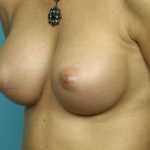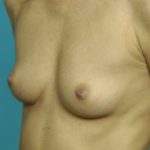While breast augmentation is largely about altering the size and shape of the breasts, there are other aspects of the procedure that are of interest. While women want many certain aspects of their breasts to change after surgery, feeling and function of the nipple-areolar complex is not one of them. While some women don’t have significant nipple feeling and are not concerned if it is lost, many women do and it is an important concern.

It has long been conjured that the approach or incision used to place the breast implant influenced the potential for permanent loss of nipple sensation. Of the four incision options for breast augmentation, (nipple, fold, armpit and belly button), it is assumed that the nipple incision has increased risk of permanent nipple changes. While this seems intuitive, previous studies have shown conflicting results on this issue.
In the October 2011 issue of Plastic and Reconstructive Surgery, a study is reported that looks at the sensation of the nipple-areolar complex after breast augmentation. This was a retrospective study conducted over six years on 1,222 primary breast augmentation patients. Any other type of breast procedure, such as a lift, done with the augmentation excluded a patient from the study. They found that the only factor associated with changes in nipple-areolar sensation at six months after surgery was the type of skin incision used. The periareolar incision was associated with a three-fold increase in persistent nipple numbness and pain over an inframammary fold incision.
It is presumed that the periareolar incision in breast augmentation increases the risk of diminished nipple sensation by cutting the nerves that supply it. Stretching the nipple and the surrounding tissues in putting in the implant, particularly the larger silicone implant, is also not helpful. Nerve regeneration or recovery may also be limited by the scar tissue that forms under the nipple from the path of dissection downward.
While the risk is reasonably low, around 6% in this study, loss of some or all of nipple sensation is a potential issue that every breast augmentation patient should be aware. Since this risk is higher with a periareolar incision, I avoid its use completely. Now that prefilled silicone implants are used more commonly than saline in breast augmentation, it is harder to insert them through a small nipple that many small-breasted women have anyway.
Dr. Barry Eppley
Indianapolis, Indiana



